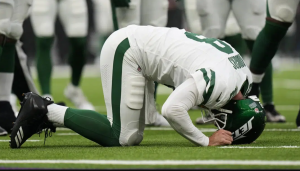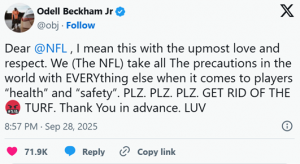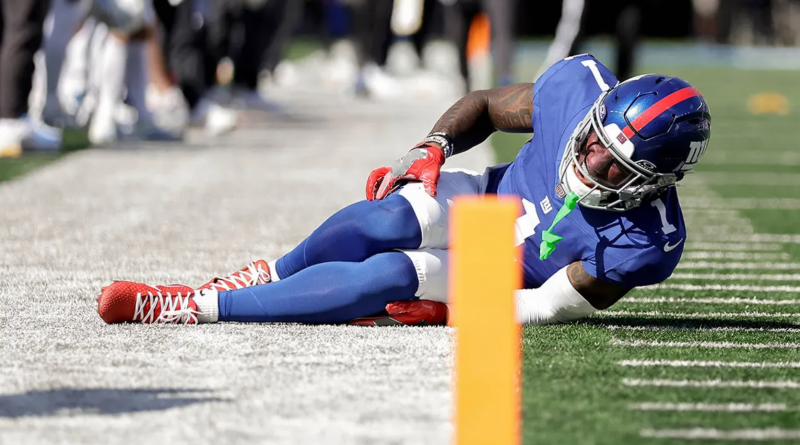NFL Injuries Have Been Out of Hand
Rachel Gaudette
Staff Writer
Over the last couple of years, the rate of injury in the National Football League (NFL) has been increasing at an alarming rate. Unlike prior decades, the focus has shifted from concussions to non-contact lower-body injuries. Players have noticed this dangerous trend and are urging the NFL to prioritize athlete health and safety by making significant changes.
This rise in injury can be partly attributed to recent changes to the league’s schedule. In 2020, the NFL expanded their playoffs from 12 to 14 teams, adding two wildcard games. Additionally, before the 2021 season, regular season was extended to include an extra game, resulting in a 17-game schedule. The increased length of the season means a shorter offseason for players to recover and rehabilitate. This decision to lengthen the season was driven primarily by NFL revenue goals, as more games equal more money for the organization. In turn, they are putting players at risk by cutting into essential downtime for rehabilitation and recovery.
In addition to the longer season, the surge in injuries can also be linked to the playing surfaces. When the NFL began, they played on natural grass fields. In the late 1960s, the league started the transition to artificial turf fields, as they require less upkeep and maintenance. Today, approximately half of the stadiums in the league use turf, while the remaining half still play on natural grass.

There has been significant controversy about the field turf conditions, particularly at MetLife Stadium, home to the New York Giants and Jets. MetLife Stadium switched to FieldTurf before the 2023 season and since then, the number of serious leg injuries has been alarming. ACL and Achilles tears have become strongly associated with MetLife Stadium in the minds of players and fans alike. Since 2020, 17 athletes have suffered season-ending injuries while playing the Jets or Giants on their home turf. Most notably, New York Jets quarterback, Aaron Rodgers, tore his Achilles on the field just four snaps into the 2023 season opener.
This season, many prominent athletes have experienced leg injuries including Tyreek Hill (dislocated knee with torn ligaments), Austin Ekeler (Achilles tear), CeeDee Lamb (ankle sprain), and Joe Burrow (turf toe). For Tyreek Hill—one of the best wide receivers in the league—this injury is trending towards the possibility of an early retirement.
The difference in injury rates is rooted in physics. Artificial turf has less “give” than natural grass. The harder playing surface forces athletes’ bodies to absorb the impact of plays and hits during games. Conversely, natural grass is softer than turf and yields to the player before the body absorbs excessive impact. This is evident when watching games on grass fields—by the end of a game, there are extensive divots throughout which represent the grass’ ability to cushion the force that the athletes would otherwise.
NFL players are actively speaking out against the league and urging the NFL to revert to grass fields. Prominent players, including Odell Beckham Jr., have been vocal about this request for change. OBJ spoke out through his X account on September 28th, posting the following:

The opinion of the athletes is clear. In 2024, the NFL Players Association Executive Director, Lloyd Howell, reported that 92% of players prefer natural grass over turf. Howell was outspoken about both his personal stance and that of the athletes he represented, saying:
“Moving all stadium fields to high quality natural grass surfaces is the easiest decision the NFL can make. The players overwhelmingly prefer it and the data is clear that grass is simply safer than artificial turf. It is an issue that has been near the top of the players’ list during my team visits and one I have raised with the NFL. While we know there is an investment to making this change, there is a bigger cost to everyone in our business if we keep losing our best players to unnecessary injuries…This is worth the investment and it simply needs to change now.”
For NFL players, the Players Association, and many fans, it is clear that turf fields are the main culprit behind the rise in devastating non-contact injuries. The crucial question now is whether the NFL will set aside their greed to prioritize the health and longevity of their players or not.
Contact Rachel at gaudetra@shu.edu

